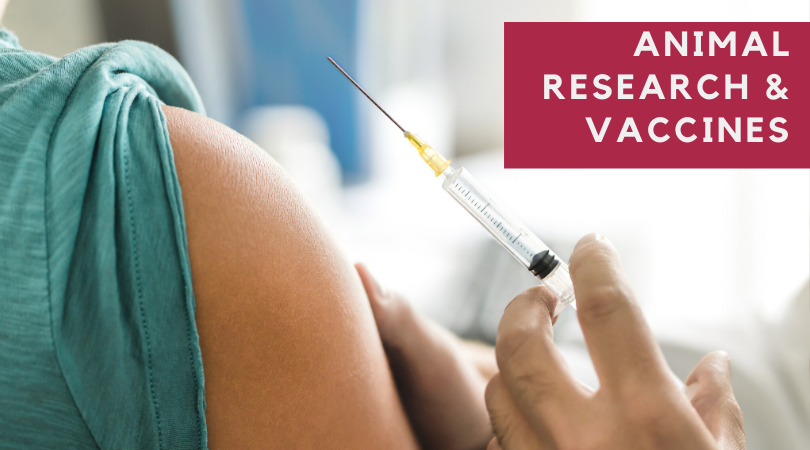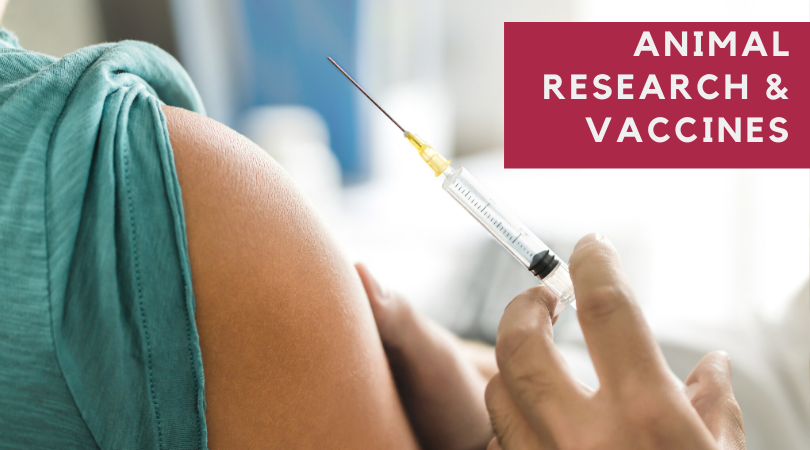As scientists across the world race to develop a vaccine for COVID-19, the disease caused by the SARS-CoV-2 coronavirus, animal research is playing a key role, as it has with the development of many other vaccines in history.
 Research with mice, rats, and other animals has enabled scientists to develop vaccines for polio, meningitis, typhus, whooping cough, smallpox, tetanus, measles, cholera, and the flu, and scientists are also working with animal models to develop vaccines for malaria, AIDS, diabetes, the Zika virus, Ebola, and even several types of cancer.
Research with mice, rats, and other animals has enabled scientists to develop vaccines for polio, meningitis, typhus, whooping cough, smallpox, tetanus, measles, cholera, and the flu, and scientists are also working with animal models to develop vaccines for malaria, AIDS, diabetes, the Zika virus, Ebola, and even several types of cancer.
The First Vaccines
Although the process of variolation (the deliberate infection of healthy people with a disease to create future immunity) had been used to fight infectious disease in ancient India and China, the first actual vaccine was developed in 1796 by Edward Jenner, an English physician, who created a smallpox vaccine by injecting pus from a girl with cowpox into the body of a young boy. The boy became ill with a mild case of cowpox, but when exposed to smallpox, a virus similar to cowpox, the boy did not get sick.
Jenner decided to call the new procedure vaccination, using the Latin words for cow (vacca) and cowpox (vaccinia).
In 1879, Louis Pasteur developed the first laboratory vaccine, for chicken cholera, based on his observation that bacterial cultures weaken and become less virulent over time—a fortunate accident that took place when Pasteur’s assistant forgot to inject the test chickens with live bacteria and went on a monthlong vacation. When he returned, he injected the chickens with the bacteria and rather than dying as they had when injected with fresh bacteria, they experienced mild symptoms, recovered, then did not become ill when re-injected with fresh bacteria.
Using this type of vaccine—called a live-attenuated vaccine—Pasteur helped develop a vaccine for anthrax that was used successfully in sheep, goats and cows. In 1885, Pasteur developed his first human vaccine, for rabies, by attenuating the virus in rabbits.
Different Vaccine Types
There are four main types of vaccines:
- Live-attenuated vaccines
- Inactivated vaccines
- Subunit, recombinant, polysaccharide, and conjugate vaccines
- Toxoid vaccines
In the years following Pasteur’s live-attenuated rabies vaccine, scientists developed live-attenuated vaccines against diphtheria, plague, tuberculosis, yellow fever, measles, mumps, rubella, varicella, and rotavirus.
While the first rabies vaccine was the live-attenuated type, it was replaced in 1967 by an improved version using an inactivated rabies virus. Other vaccines using an inactive virus include those for polio, flu, and hepatitis A.
Subunit, recombinant, polysaccharide, and conjugate vaccines use a specific piece of the germ, such as its protein, sugar, or capsid. This approach was used to develop vaccines for diseases including hepatitis B, human papillomavirus (HPV), whooping cough, pneumococcal disease, meningococcal disease (meningitis and septicemia), and shingles.
Toxoid vaccines use an inactivated toxin made by the virus or bacterium that causes a disease as an antigen to elicit immunity. Toxoid vaccine include those against diphtheria, tetanus, and botulism.
Scientists are also working on new types of vaccines, including DNA vaccines, which use genetically engineered plasmid to produce a protective immunological response, and recombinant vector vaccines, which use live replicating viruses engineered to carry extra genes derived from a pathogen.
Future Vaccines
The protocol for developing a vaccine has changed dramatically since the early days of vaccines, and now require exhausting testing and multiple rounds of preclinical trials, often with mouse models, before a vaccine is determined safe to be used on human subjects.
Before the turn of the century there was no regulation on the development or administration of vaccines, but in 1902, after 22 children died from tetanus after being inoculated with contaminated vaccines, the U.S. Congress passed the Biologics Control Act, also known as the Virus-Toxin Law, which was the first law to regulate biological products such as vaccines in the United States.
With new scientific standards and government regulations, vaccine development can now take many years. The vaccine for rotavirus, for example, took 26 years from the beginning of research to FDA approval.
While regulations sometimes extend the amount of time it takes for a vaccine to enter general use, advanced technology and scientific knowledge are actually making vaccine development faster.
A Coronavirus Vaccine Timetable
Chinese scientists published the novel coronavirus’ genetic code on January 11, 2020, and by March, Cambridge, MA-based Moderna Inc. had developed a potential vaccine called mRNA-1273 and begun human testing with a few volunteers.
Inovio Pharmaceuticals in Plymouth Meeting, PA also have a preliminary DNA vaccine called INO-4800, which scientists developed in three hours, and plan to start human testing in April. In addition to these two efforts, there are more than two dozen other coronavirus vaccines in the works all over the world.
In addition to preclinical trials, any vaccine still has to undergo extensive testing in humans to prove that it’s safe and that it works, then it needs to be produced on a mass scale. The process could take up to 18 months according to experts, which seems long, but is actually record time for a vaccine.
As with most vaccines, preclinical trials with mouse models will play a key role in developing and testing these vaccines, with the hope that at least one will offer a successful way to consign COVID-19 to the list of deadly diseases that are now just a memory.
-Kent Scientific-


